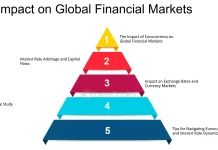Red Sea accounts for 80% of India’s exports to Europe, so a crisis could affect the country. Since the Red Sea region is used for about 80% of outbound shipments to Europe, the Red Sea shipping crisis may have the greatest effect on India’s exports to that continent, the commerce and industry ministry said on Monday.
This is significant because, in the context of the Russia-Ukraine conflict, India’s exports of goods to the European Union (EU) have already decreased owing to waning demand. More than 15% of India’s total goods exports come from the EU.
Furthermore, it is anticipated that several trade regulations pertaining to the environment, like the EU’s deforestation law and the carbon border adjustment mechanism, will negatively impact India’s exports in the future.
Eighty percent of India’s merchandise trade with Europe goes through the Red Sea, according to the ministry, and attacks on commercial shipping vessels passing through the lower Red Sea have increased since mid-November.
“The disruption in the Red Sea is driving up costs.” But in the end, demand will determine it. The Suez Canal is also used for US exports. The cost of transport is rising. There is also a separate congestion surcharge. However, the shipments will proceed if the demand is strong.
“They will move if they are not time-sensitive products. It is a worldwide problem. “Every commodity travels via the Red Sea route from the eastern to the western part,” Commerce Secretary Sunil Barthwal stated during a press briefing.
According to the ministry, the Red Sea region is essential for 12 percent of global trade and 30 percent of container traffic worldwide. Approximately 95 percent of vessels have rerouted around the Cape of Good Hope, resulting in additional 4000–6000 nautical miles and 14–20 day journeys.
According to EPCs, the shipment has been placed on hold because of the high freight and surcharges. Because the incoming ships have longer routes, their sailing has been affected and is typically delayed by two to three weeks. Since there are enough empty containers available, the availability of containers has not yet been considered a problem. However, the combination of increased freight costs, insurance premiums, and longer transit times could result in significantly higher costs for imported goods, according to the ministry. Indian shipments of low-value goods, like textiles and agriculture, to Europe are primarily anticipated to be affected by disruptions in the Red Sea region.
The two-day visit by External Affairs Minister S Jaishankar began on Sunday amidst escalating tensions in the West Asian region. In light of the growing cost of shipping to Europe, the union government is also considering the use of alternative trade routes and has requested that Export Credit Guarantee Corporation (ECGC) refrain from raising insurance premiums.
The Red Sea region’s security concerns have caused freight rates to more than double for Europe, according to a report published by The Indian Express. Since the US and the UK launched an attack on Houthi rebels in Yemen on Friday in retaliation for attacks on their commercial ships in the Red Sea region, concerns about disruptions in the region have grown, and oil prices have started to slowly increase.
On January 17, the commerce ministry convened an interministerial meeting where representatives from five ministries—external affairs, defence, shipping, finance, and commerce—drew up a plan to address international issues that affect Indian trade interests.




























